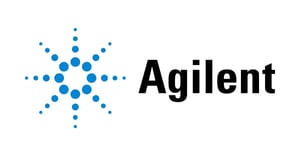Overview
The quantification of PFAS from environmental samples is a complicated undertaking due to the high levels of contamination typically observed in most laboratories. Sample preparation and extraction are critical aspects of any workflow for PFAS analysis and demands a serious level of attention, like the LCMS operation. In this talk, Dr. Bradley Clarke from the Unversity of Melbourne, Australia, provides an overview of the sample extraction processes for the extraction of PFAS from water, soil, and serum, including steps taken to reduce sample volume without sacrificing limits of quantification.
By watching this presentation you will learn about:
- Common techniques used for water analysis using solid-phase extraction (SPE).
- Approaches for minimising sample volume and use of costly internal standards.
- Workflows for the quick extraction of PFAS from solid matrices.
Presenter Dr. Bradley Clarke (Senior Lecturer in Environmental Science and Analytical Chemistry, University of Melbourne, Australia)
Dr. Bradley Clarke (Senior Lecturer in Environmental Science and Analytical Chemistry, University of Melbourne, Australia)
Dr Brad Clarke is currently a Senior Lecturer at the University of Melbourne (Australia) the chief investigator from the Australian Laboratory for Emerging Contaminants (ALEC). ALEC is a dedicated partnership between private industry and equipped with state-of-the-art analytical instrumentation (LCTQ, GCTQ, LCQTOF, GCQTOF) to solve issues of emerging contaminants. Brad’s research focusses on assessing the risk to public health and the environment from persistent organic pollutants (POPs) with a particularly focus on legacy and emerging per and polyfluoroalkyl substances (PFAS), novel flame retardants and microplastics. Prior to joining the University of Melbourne, Brad was the Program manager for the Environmental Science degree at RMIT University and has held postdoctoral positions at Imperial College London and the University of Arizona.
In addition, you'll be able to watch the following on-demand presentations...
 Latest Regulations & Standards on PFAS Testing in the Materials Industry
Latest Regulations & Standards on PFAS Testing in the Materials Industry
Dr Yuhong Chen (Global Materials Segment, Applied Markets, Agilent Technologies) Sampling and Analysis of Volatile PFAS in Air by TD-GC-MS
Sampling and Analysis of Volatile PFAS in Air by TD-GC-MS
Carlos Gil (Business Development Manager, Markes International GmbH) Streamlined PFAS Annotation and Visualization with FluoroMatch Flow and Visualizer
Streamlined PFAS Annotation and Visualization with FluoroMatch Flow and Visualizer
Stephen Baumann (Application Applied Segment Manager, Agilent Technologies) Using Thermal Desorption and GC-MS/MS for the Analysis of PFAS Compounds in Air for Improved Detectability & Reliability
Using Thermal Desorption and GC-MS/MS for the Analysis of PFAS Compounds in Air for Improved Detectability & Reliability
Kurt Thaxton (Gerstel)
As well as download the following educational assets...
 Your Guide to Targeted Quantification & Screening of PFAS Compounds in Environmental Matrices
Your Guide to Targeted Quantification & Screening of PFAS Compounds in Environmental Matrices
 Get your lab up to speed for PFAS analysis with the Agilent start-to-finish drinking and surface water eMethod
Get your lab up to speed for PFAS analysis with the Agilent start-to-finish drinking and surface water eMethod
 Customer Testimonial: Watch How Sanexen Environmental Services Meets Client Needs for PFAS Testing
Customer Testimonial: Watch How Sanexen Environmental Services Meets Client Needs for PFAS Testing
 Get Ahead and Stay Ahead with Comprehensive Workflows for Extraction, Screening, Quantification, and Reporting of PFAS in Water Samples
Get Ahead and Stay Ahead with Comprehensive Workflows for Extraction, Screening, Quantification, and Reporting of PFAS in Water Samples
 Meet the Challenges of PFAS Soil Testing in an Evolving Regulatory Framework With Start-to-Finish Workflows
Meet the Challenges of PFAS Soil Testing in an Evolving Regulatory Framework With Start-to-Finish Workflows
sponsored by:


